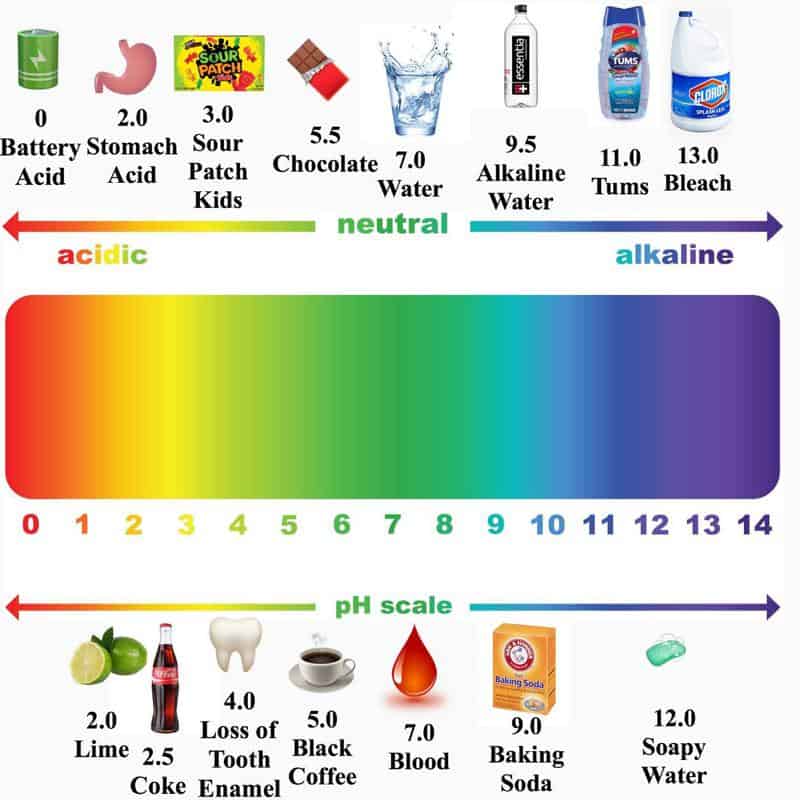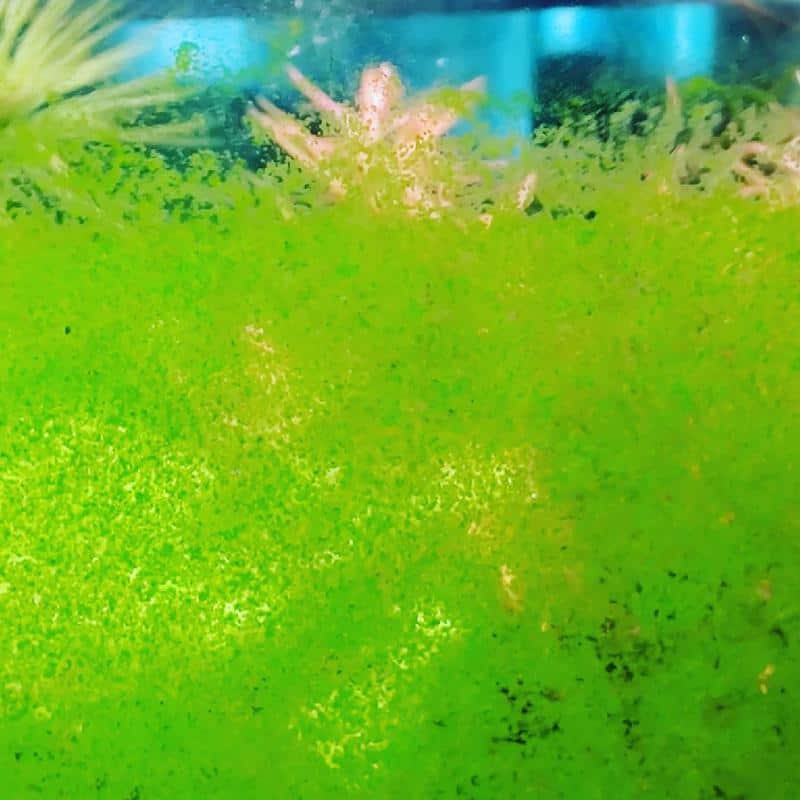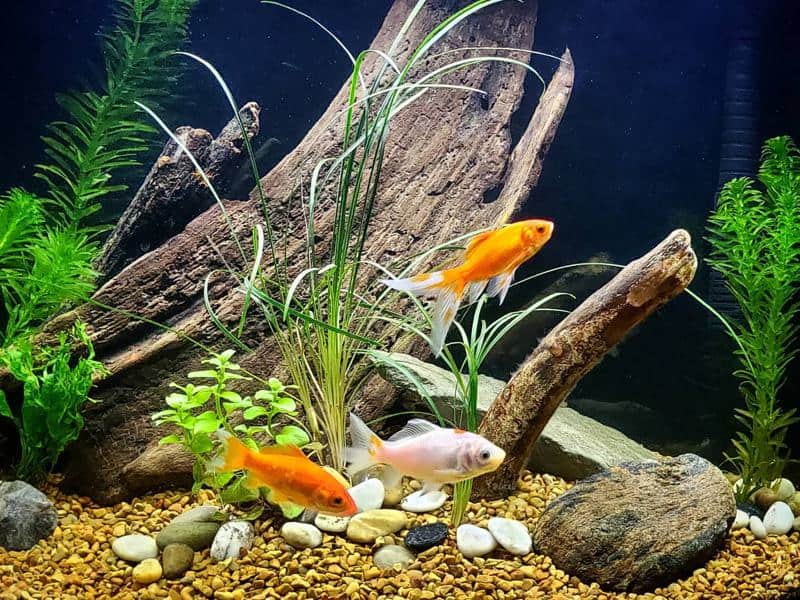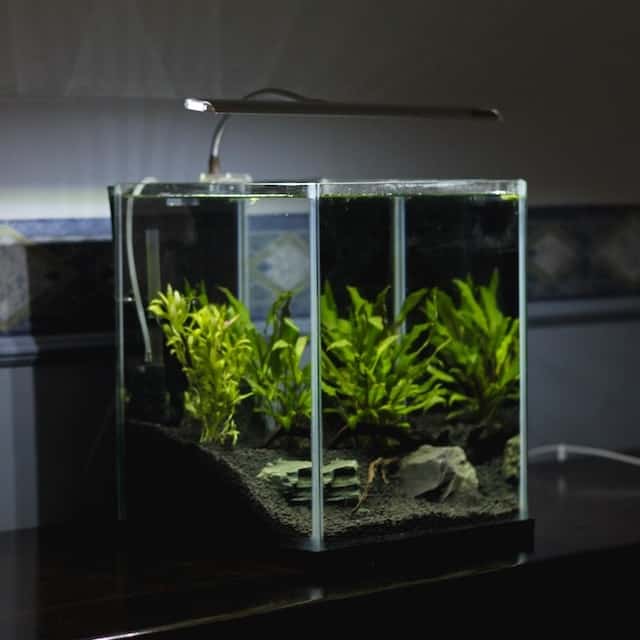What makes pH such a vital factor in the aquarium hobby? If you want your fish to thrive, recreating their natural environment is essential. That’s where maintaining the optimal pH level comes in.
Unfortunately, many first-time aquarists face difficulties when it comes to controlling water parameters. If you’ve been battling a rising pH range in your fish tank, we can help.

This article will break down all there is to high pH and how to control it. There’s also detailed information on the symptoms and dangers of too much alkalinity. Oh, and you don’t want to miss the FAQ section for queries related to the topic.
What Are the Causes of High pH in Fish Tanks?
There’s a reason why expert aquarists always stress the importance of water requirements. No matter the aquatic creature, raising them in a tank means you’ll have to recreate their native conditions.
Remember, each fish species has unique water needs. Typically, the normal pH range for freshwater species can range from 6.8 to 8.0. The specifics of pH levels will vary depending on the species’ geographical range.
When the pH level of an aquarium drops too low or jumps too high, it can negatively impact the health of your fish. Sudden pH fluctuations can even be fatal.
That’s why learning about what can bring about a spike in pH is important. Here are some of the common culprits behind high pH in aquarium tanks.
Live Plants
Aquatic plants make great additions to tanks for several reasons. They can help maintain ammonia levels, provide fish shelter spots, and build ambiance. Some fish keepers allow algae growth because it’s a great source of dissolved oxygen.
Plants survive via photosynthesis and respiration. They use sunlight to absorb carbon dioxide (CO2) to make oxygen and fuel to stay alive.
Generally, that’s a good thing, as too much CO2 in an aquarium can cause hypoxia. On the flip side, however, if the plants absorb too much CO2, it results in carbonic acid depletion.
This ends up increasing the pH levels of water. How fast or slow the pH of water rises will depend on the amount of vegetation your tank includes.
Inefficient Filtration System
Filtration systems can clear the aquarium water of different types of impurities. For example, a mechanical filter is efficient at removing solid debris. But, if your filter isn’t up to par, it can cause all types of problems, including rising pH levels.
Filters work to remove organic waste from the water before it can break down. This helps keep the water fresher for longer as pollutants are controlled.
When a filter stops working, there’s nothing to extract impurities from the water column. There’s nothing to stop the organic debris from playing havoc with water conditions. In other words, an ineffective filter will result in rising pH and ammonia levels sooner or later.
Leaching
Tank decorations and gravel substrate can also affect water pH. Rocks include mineral substances that leach or dissolve into the water over time.
The mineral matter then reacts with other chemical compounds, resulting in pH fluctuations. For instance, dolomite gravel and crushed coral both include calcium carbonate.
The compound occurs in most stones and is great at reducing water acidity. Limestone is another sedimentary rock that can raise alkalinity.
It’s common for newbie fish keepers to add decorations without knowing the side effects. That’s why it’s exceedingly important to do your research when setting up an aquarium for a particular species.
Excessive Aeration
Air bubblers are common in aquariums. These help increase water oxygenation through surface agitation. When bubbles reach the surface, they encourage oxygen absorption and release carbon dioxide.
In simple words, air stones help raise dissolved oxygen in fish tanks, which is healthy for fish. Although, too much aeration can also cause problems.
Too much water movement can deplete carbon dioxide supplies pretty fast. The acidity levels can go down automatically when this happens. Your aquarium’s water turns too alkaline because there’s nothing to provide balance.
Tap Water
Here’s the thing. Closed water systems like aquariums need water changes to keep them livable for fish. The process requires taking out a quantity of the polluted water and replacing it with fresh stock.
Most aquarists prefer using tap water for this purpose. But, before you can add tap water to your aquarium, you need to make it safe.
Tap water contains mineral sediments, chemical compounds, and its own pH level. That’s why you’ll have to run it through several processes to make it safe for the fish tank.
If the water’s carbonate hardness or KH level is high, so is its pH level. Not testing tap water and adding it directly to the fish tank can be highly dangerous for your aquatic pets.
pH-increasing Cures
It’s not uncommon for aquarists to rely on household remedies like baking soda to manage pH levels. Baking soda (sodium bicarbonate) is naturally alkaline and has a pH value of 8.
That’s why fish keepers sometimes add a liquid mixture of baking soda to induce alkalinity. But, such self-treatments aren’t 100 percent foolproof. Without proper measurements, you can end up adding too much baking soda.
While a small surplus of the stuff won’t matter much, too much in one go can lead to a sudden spike. If you’re a fan of using sodium bicarb, make sure you have the necessary proportions.
The rule of thumb for baking soda is one teaspoon per five gallons of water. If your fish tank has a ten-gallon capacity, you’ll need two teaspoons mixed in water for a slight increase in pH.
What Are the Symptoms of High Water pH?
Understanding the symptoms of high alkalinity can make a huge difference. The sooner you discover the tank’s pH is fluctuating, the sooner you can remedy the situation.
Doing so can help keep your aquatic pets from developing health concerns. Here are some red flags that go hand-in-hand with rising pH levels.
Unusual Swimming Patterns
One of the most obvious signs of high alkalinity is when fish start swimming erratically. Instead of the standard vertical or horizontal patterns, you might see them move in all directions. Another common side effect is when the fish move too fast as if suffering from excess energy.
Scratching Against Surfaces
An abnormally high pH can induce skin irritation. An aquarium where the alkalinity is high will have fish rubbing against surfaces. That’s in response to the itch or tingle that high pH can cause in aquatic animals.
Strained Breathing
High alkalinity can be just as dangerous as ammonia spikes. That’s because both can cause tissue damage in fish.
If you notice your fish not being able to breathe without strain, you might want to check the pH levels immediately.
Highly alkaline water can damage your finned friends’ gills, making breathing difficult. Aside from this, you may also observe excess mucus secretion around the gill area.
Sudden Algae Growth

A less-than-ideal pH range can also cause environmental symptoms. For instance, a sudden algae or slime growth boost is pretty standard in tanks with increasing pH. Additionally, algal blooms can be a pain to end. They’re also a danger to the tank’s oxygen levels.
White Spot Disease
Once the pH levels have been unstable for a while, it opens the door for diseases like (ICH) white spot disease to take over. A protozoan parasite causes ICH, and these organisms are present in most fish tanks. The parasite remains harmless until something interferes with your fish’s immunity.
Once immunity drops, the parasite can easily latch on to the host and wreak havoc. Symptoms of Ich include white spots all over the body, inappetence, and lethargy.
How to Safely Treat High Aquarium PH
Once you’re sure your tank’s alkaline levels have gone through the roof, it’s time to tackle the problem. The good news is we’ve done all the heavy lifting for you.
Scroll down to learn all the safest and smartest ways to treat high pH in aquariums.
Add Driftwood to the Tank

If you’re not aware of what driftwood is, allow us to explain. Driftwood is wood that ends up on the shores of lakes, rivers, or beaches through wind or wave movement.
If you have access to natural water bodies, you may have access to an unending supply of driftwood. This type of wood is perfect for helping lower pH naturally because it contains tannins.
Once you add the log to your tank, the tannins slowly leach out in the water and work on lowering alkalinity. But, fish keepers should remember adding driftwood to a tank without cleaning it is a bad idea.
For instance, it can contain parasites and other types of contaminants. You’ll need to soak the wood for a few days to avoid issues like water coloration.
Add Peat Moss to the Tank
If you can’t get your hands on driftwood, peat moss can be an easy replacement. Peat moss is the fibrous by-product of decomposed organic matter in peat bogs.
Once the moss is introduced into a fish tank, it releases tannic and gallic acid. These compounds help eliminate bicarbonates and lower the water pH. Peat moss is especially good for Cichlid, Catfish, and Tetra tanks.
Use a Reverse Osmosis Filter
Reverse Osmosis (RO) filters rely on a semi-porous membrane to isolate water contaminants. These include large particles, molecules, and sediments.
RO systems can filter out even the smallest impurities, including substances that contribute to high pH. But, there’s a catch. RO filters can be a little heavy on the wallet, which means they’re not practical for everyone.
This type of device is an investment and is generally more suited to aquarists with large fish tanks.
Turn to Liquid Fertilizers
If you’ve been paying attention so far, you’ll remember that carbon dioxide (CO2) can help lower water pH. The science behind it is simple. CO2 turns to carbonic acid when it reacts with water.
Once that happens, the hydrogen ions help lower pH by turning the water acidic. That means fishkeepers with live plants can lower pH values and boost plant growth with liquid fertilizers.
Nonetheless, since fertilizers shouldn’t be used in excess, make sure to add the right amount. Too much CO2 is bad for your plants and fish.
Use Distilled White Vinegar
Did you know white vinegar includes acetic acid? When you add distilled white vinegar to your aquarium, the acetic acid transforms into carbon dioxide.
That’s why white vinegar is the perfect alternative to liquid fertilizers. Experts suggest adding one ml/gallon of water to reduce the pH level by 0.3.
Still, you’ll have to be very careful when adding the solution to your tank. Ensure you add the solution in a corner as far away from your aquatic pets and plants as possible.
Aquarists should note that adding distilled white vinegar to water can lower oxygen levels. It’s a good idea to have your bubbler or airstone working when trying this tip.
Finally, don’t be tempted to use anything other than distilled white vinegar. This type of vinegar has a pH of 2.5 thanks to 5 percent acetic acid. Anything more can be dangerous for your fish.
Read More:
- Fish at Bottom of Tank: Why & Solutions
- How to Lower & Remove Ammonia in Fish Tank?
- Best Aquarium Plants to Reduce Nitrates
- Indian Almond Leaves
FAQs
What Happens if pH Is Too High in Fish Tank?
When aquarium water is too alkaline, it can affect aquatic creatures differently. For instance, how well a fish can tolerate high pH levels depends on its species. Even the slightest of hikes can cause symptoms in fish that need baseline or neutral pH.
It’s common for fish to swim erratically when the pH goes too high. Another side effect is skin irritation that can cause fish to rub against surfaces. But, the most troubling aspect of excess alkalinity is ammonia toxicity.
Ammonia can become more toxic in water with a high pH compared to acidic water. Excess alkalinity can cause tissue damage to the gills of fish. This strains their breathing and increases mucus production.
A high pH can also affect crustaceans as it interferes with their ability to absorb calcium. Shrimps can suffer from molting concerns where the water pH keeps fluctuating.
Is 8.2 pH Too High for Aquariums?
There’s no set limit for the ideal pH of water because it largely depends on the kind of fish you have. The optimal pH level for aquatic creatures depends on their native habitat and is subject to change. That’s why experts suggest fish with similar water needs for a community setup.
Generally, a pH range of 6.8 to 8.0 is safe for most freshwater species. Nonetheless, when judging what’s best for your finned friends, it’s best to look for signs of distress.
If you notice the pH level of the water has gone up by a degree or two, but the fish are doing fine, you’re safe. Once the fish start displaying symptoms and distress, it’s best to get the pH under control as quickly as you can.
Also, it’s never a good idea to change the pH level of water by more than 0.2 or 0.3. Too big a change can cause tissue damage or death.
How Can I Test My Aquarium Water at Home?
The best way to keep track of aquarium water chemistry is by buying a good-quality water testing kit. These kits help you check parameters such as pH, ammonia, and nitrites.
Carrying out water parameter checks every two weeks should help you stay alert to any worrying developments. Aquarists can also rely on digital pH testers.
These are available in various formats (with electrodes, LCD screens, and pen meters). Some pH sensors are also available in a combo with temperature meters.
What Is an Aquarium pH Crash?
The term ‘pH crash’ is used when an aquarium experiences a significant drop in pH levels. Typically, such changes are sudden and require readings to go below 6.5.
Most freshwater fish species need neutral readings (6.8 or higher), which is why many don’t survive a pH crash. These sudden drops in water pH will generally occur due to low carbon hardness.
An abrupt increase in biological material, such as fish waste due to overfeeding or dead fish, can also bring about a crash. Aquarists should watch their tank’s pH readings to avoid such concerns.
Once a pH crash occurs, it’s not easily controlled. That’s because they turn the water acidic. This, in turn, starts killing off beneficial bacteria and creates ammonia toxicity.
Conclusion
We’re at the end of our pH-centric guide and hope we’ve answered all your queries. Now that you’re aware of what causes high aquarium pH, its symptoms, and how to treat it, you’ll be better prepared to tackle any changes.
What’s essential is that maintaining stable water parameters is key to good fishkeeping. This is equally true for pH levels.
Excess alkalinity can occur for several reasons. But treating high pH requires careful handling and patience. The goal is to reach the optimal pH range without sudden dips or lifts. Fish don’t react well to abrupt shifts in water conditions.
The good news is you can depend on any of the solutions listed in this guide to lower the pH of your fish tank. Once you’ve achieved that, work on your water maintenance skills to avoid any such problems in the future.
